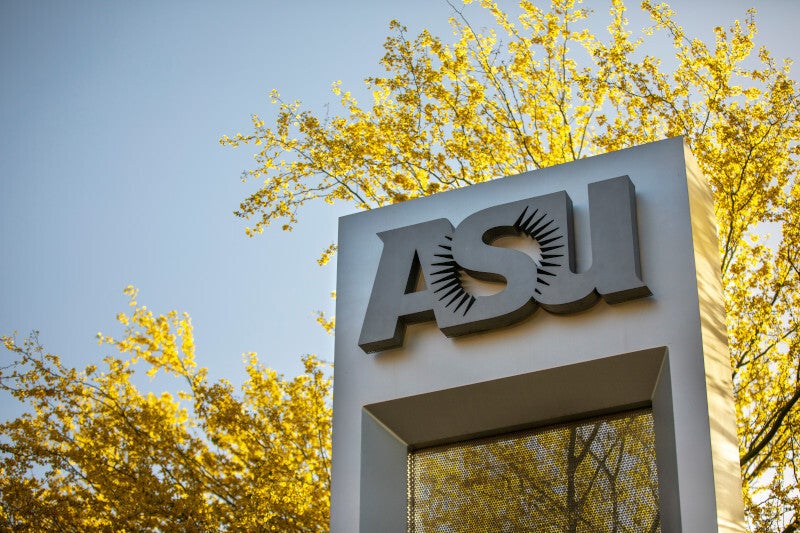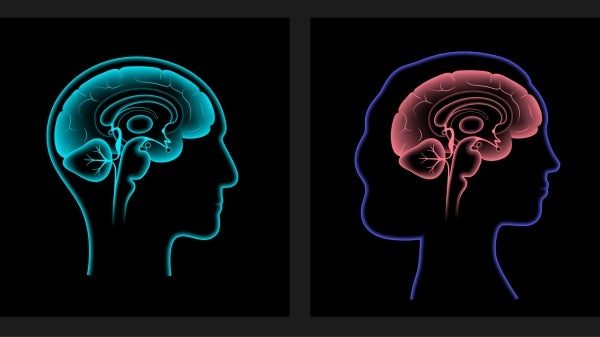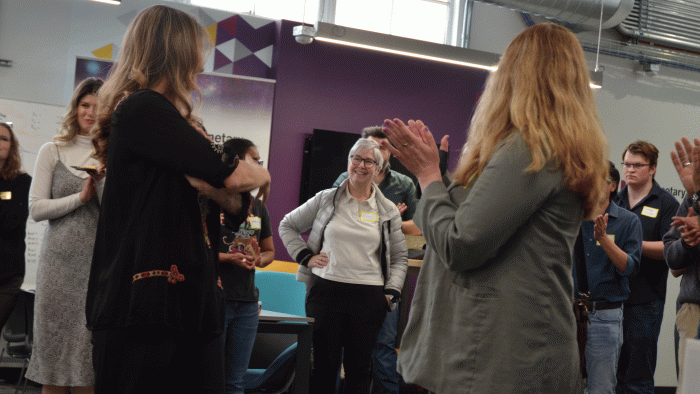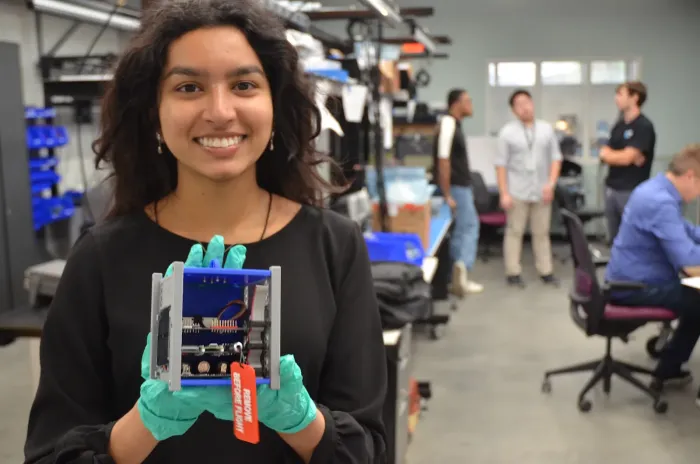ASU Interplanetary Lab celebrates 5 years of success
ASU students gather in the Interplanetary Laboratory on the Tempe campus Wednesday to celebrate the lab's fifth anniversary. The lab serves as an interdisciplinary resource for students, faculty and even outside businesses. Photo by Merrill Capps
Five years ago, an Arizona State University student came up with the idea of creating a special satellite in what was then the newly built Interplanetary Laboratory. The idea was to design something that would allow people to communicate with space.
“At first we thought it could never be done,” said Eric Stribling, interim lab director and one of several speakers at the lab’s fifth-anniversary celebration Wednesday in Sun Devil Hall on the Tempe campus.
But after three years of designing and developing, the students working in the lab constructed just such a satellite. LightCube is a small, standard-sized satellite that was launched by NASA. It can be deployed to low-Earth orbit and commanded with a ham radio that sets off a flash from the spacecraft that is visible from the ground.
“It was a tremendous success with the community of ham operators around the world,” said Stribling, an assistant teaching professor of the Interplanetary Initiative. “We got feedback from as far away as Brazil and Poland.”
That was one of three student-powered, NASA-supported missions launched by the lab over the past five years and celebrated at the anniversary event. Other satellites include the Phoenix, an infrared camera used to look at urban heat islands, and DORA, which uses lasers for inter-spacecraft communication.
With more than 40 space-related projects successfully completed, the lab's accomplishments were lauded at the event that drew students and faculty from a variety of schools including the Ira A.Fulton Schools of Engineering and the School of Earth and Space Exploration. Outside business partners were also on hand.
Landing the space lab
Among the nearly 50 people who attended the event was Daniel “Danny” Jacobs, an assistant professor in the School of Earth and Space Exploration. Jacobs designed and directed the 6,800-square-foot space, which serves as an interdisciplinary resource for students, faculty and even outside businesses. More than 300 students use the lab each semester.
“It was a privilege (to be asked to design the lab),” said Jacobs, who at the time described it as an “experimental lab, not just a lab that does experiments.”
Guests received tours of the lab, which provides access to specialized equipment and expertise, and enables groups to pursue projects that are otherwise out of reach due to limited resources.
The electronics lab is where production and testing take place. The shop is where mechanical fabrication and testing is done. Popular attractions during the celebration were the vacuum chamber and vibration table, unique resources for campus. Another room holds more than 30 3D printers.
And last but not least is a huge space where the party took place and students typically hang out, do homework and develop special projects and friendships.
“The first goal is to train students, and the secondary goal is to support other activities on campus,” Jacobs said. “We have students that are learning how to build satellites, how to test them and how to build other things that are similar.
“And then when other people are on campus, other faculty or maybe commercial partners want to do something, we have trained students that can help them and get even more experience while doing that. Ultimately it's all about the students’ success. They're building things that work, and then they're going out and getting great jobs to do more of that.”
Engineering education extends beyond the classroom
Chandler Hutchens is one of those students. Hutchens graduated from ASU in 2024 with a bachelor’s degree in aerospace engineering and a master’s degree in aerospace engineering from the Fulton Schools of Engineering. He quickly landed a job as a space system engineer at Northrop Grumman.
“I learned things in the lab that I couldn’t possibly learn in the classroom,” said Hutchens, who also spoke at the event.
“The most important thing I learned was how to be an engineer. ... When you are working in a lab, you get real hands-on experience that is very practical to use when you work in the industry. What I learned here is directly correlated to my work in Northrop Grumman."
Bella McAuliffe also spoke at the event. She is a second-year student studying aerospace engineering and working at the lab.
“What makes this place special is that we get to have a huge variety of experiences,” she said.
What's in the stars
What kind of space-related developments are on the horizon for the lab?
The next project to deliver is the Coconut, a custom satellite that will forward data from small, inexpensive ground stations all around the world back to ASU.
Also in the mix is SPARCS, a small space telescope that monitors the flares and sunspot activity of low-mass stars to assess its habitability.
Beyond that, Jacobs says the lab will be used for more training flights and missions and to support more projects and partnerships at ASU.
“And who knows, maybe in the next five years we will be able to land a satellite on the moon.”
More Science and technology

3 ASU faculty members earn highest honor for early-career scientists, engineers
Three faculty in The College of Liberal Arts and Sciences at Arizona State University have been awarded the Presidential Early Career Award for Scientists and Engineers, or PECASE, by former…

The Polytechnic School at ASU hits milestone mark at 10 years
The year was 2014.Taylor Swift released “1989.” "Frozen” and its soundtrack were stuck in the minds of many.Facebook was still the most popular social media site, and “Happy” by Pharrell…

Study finds cerebellum plays role in cognition — and it's different for males and females
Research has shown there can be sex differences between how male and female brains are wired.For example, links have been made between neurobehavioral diseases — such as attention-deficit/…

